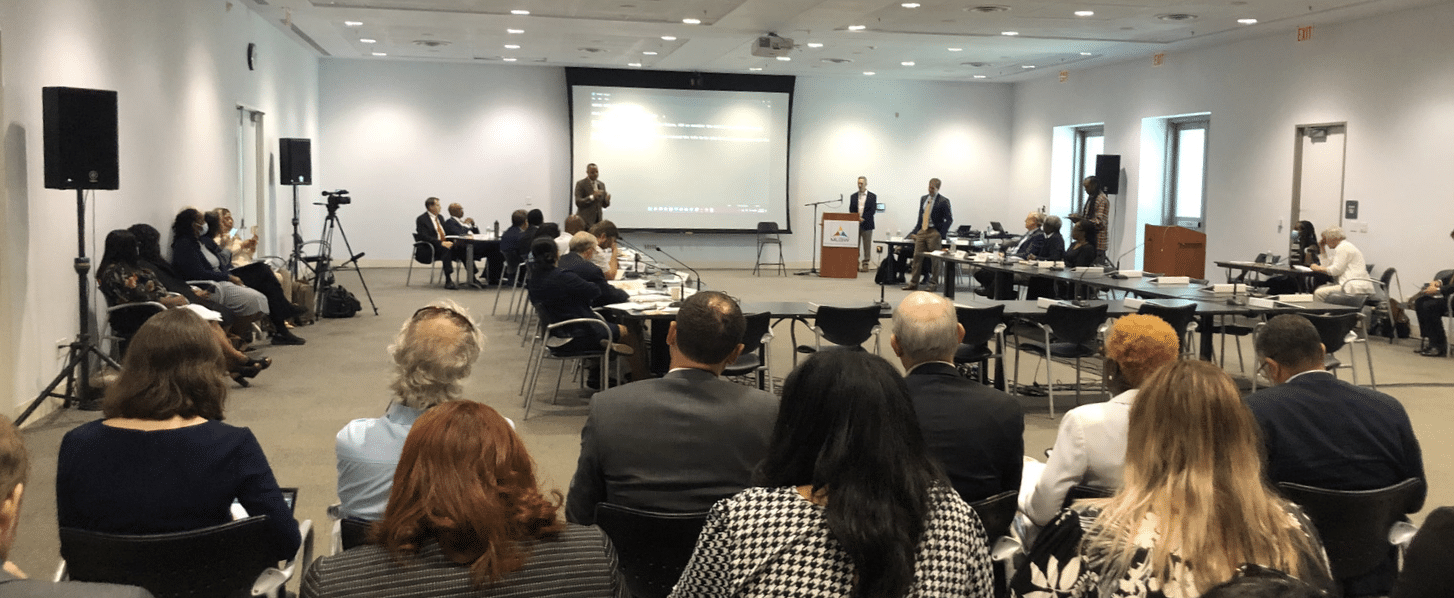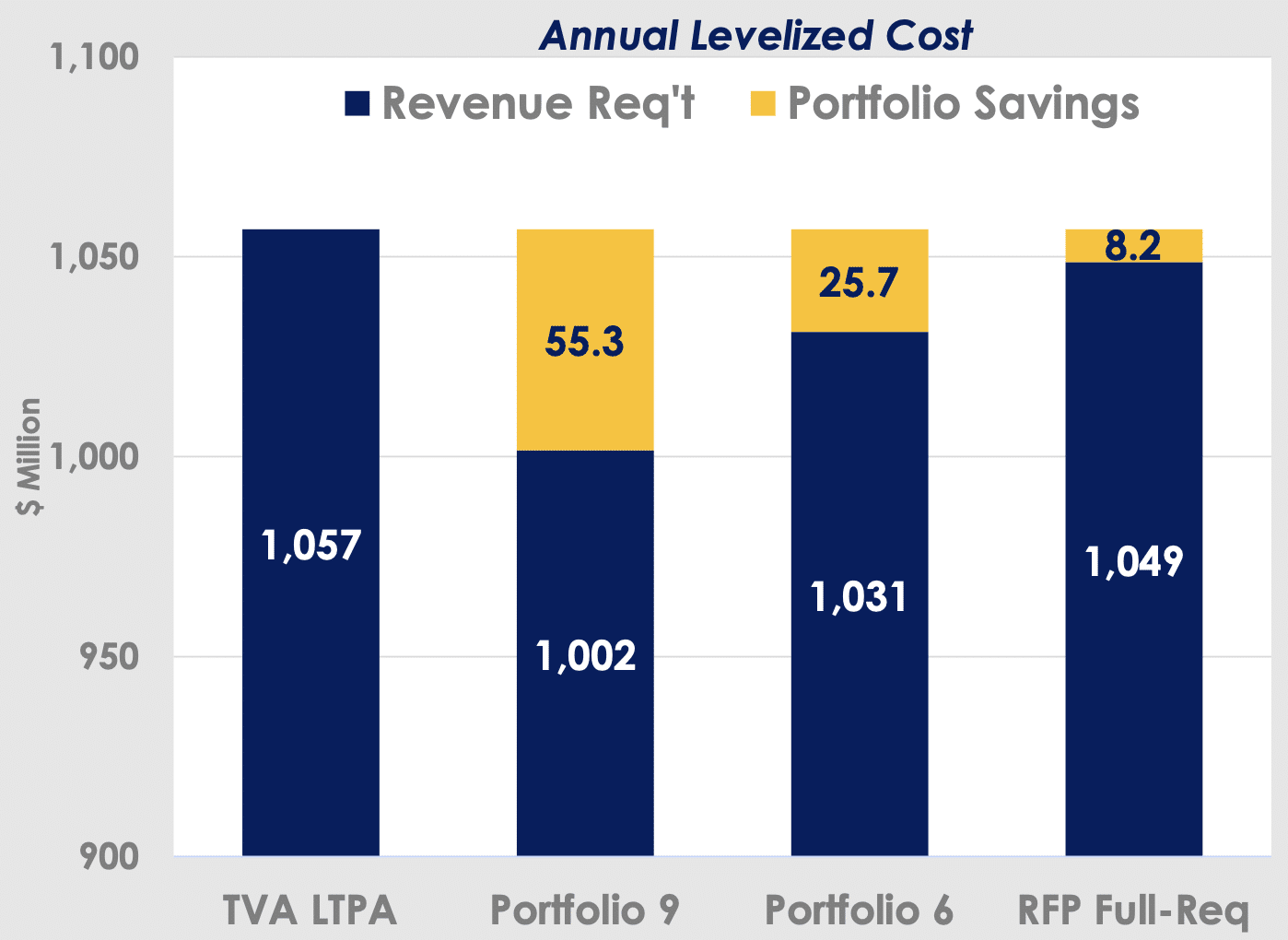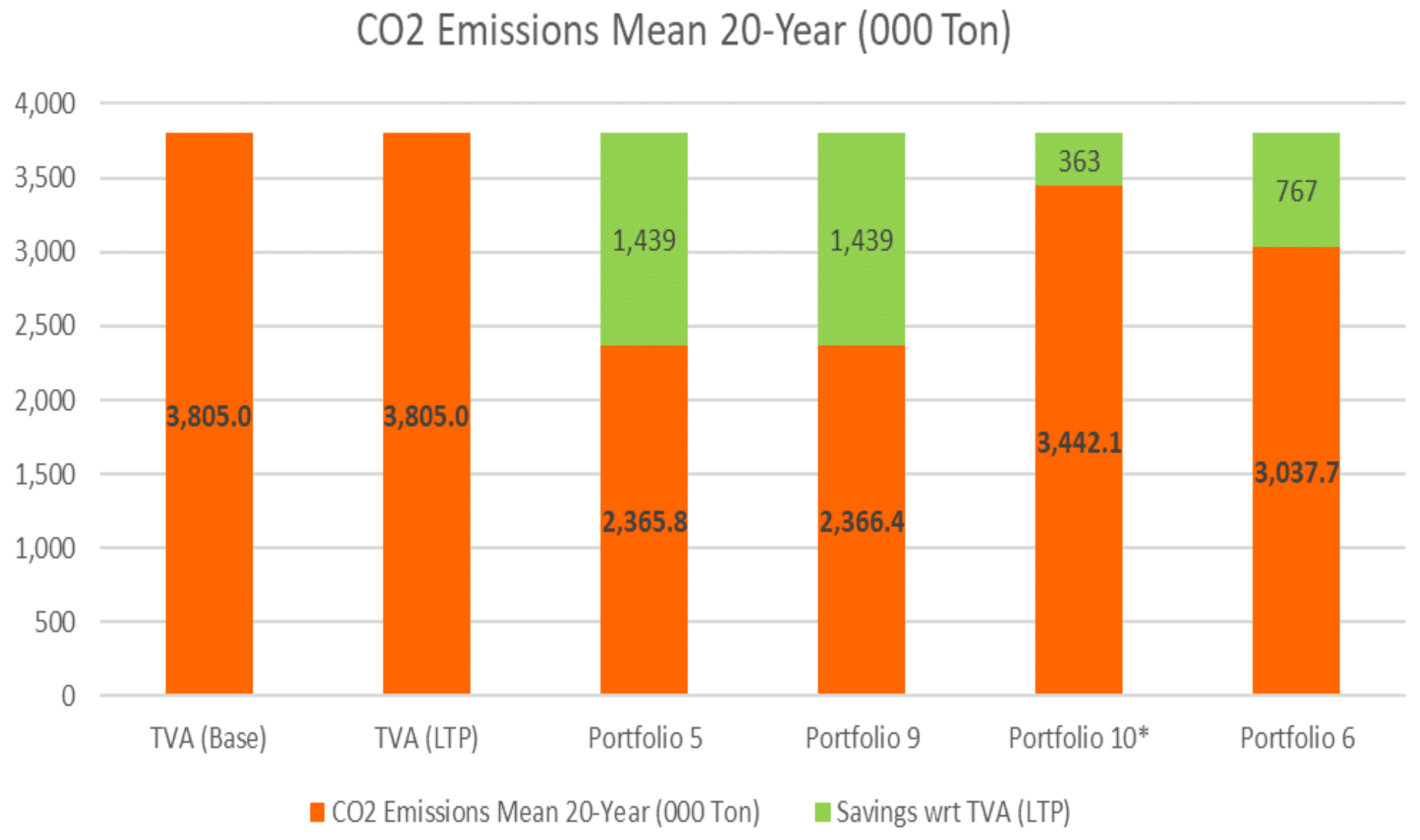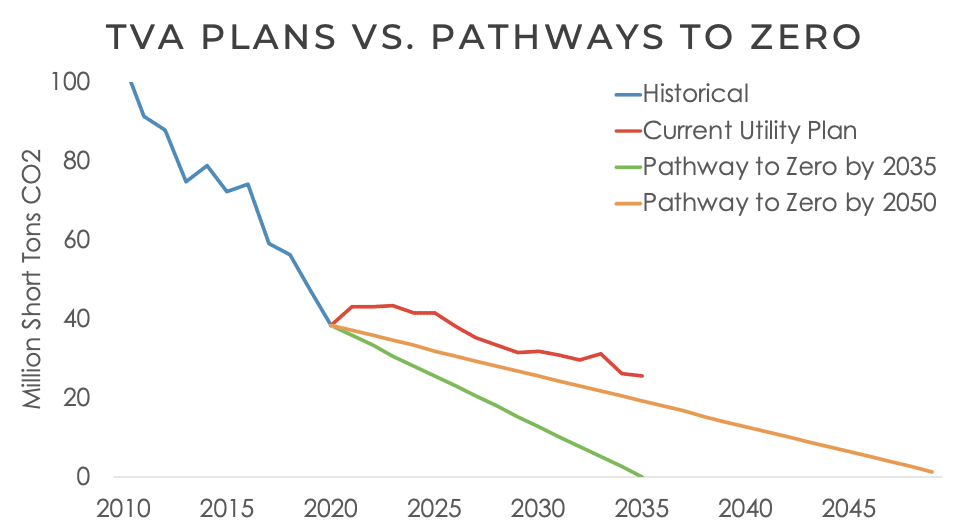The following is provided by Pearl Walker, organizer with Memphis Has The Power + Southern Alliance for Clean Energy:
| I wanted to fill you in on the latest news on our utility MLGW. You might have heard that recently MLGW held a meeting that gave the public a peek at their process of evaluating potential new suppliers of electricity. Lots of news outlets covered the story but some of the important details seemed to go unnoticed, so I wanted to share with you our recent blog post, Evaluation Shows Memphians Would Benefit from New Power Supply, More Information Will Reveal Benefits, that has some of the important details for you to know and consider.
Here are three important points you need to know from the post:
3. MLGW’s analysis left out some important factors. It didn’t even touch on some major benefits for Memphians if MLGW switched power suppliers. Benefits like billions of dollars of local investment, new job opportunities, big environmental benefits from lower-polluting energy sources, and unprecedented opportunities for advancing energy justice in our community. Other topics were barely discussed, like helping Memphis have the power to create its own destiny. Rather the presentation focused lopsidedly on potential risks of switching power supplies while ignoring important benefits for the community. These benefits need to be considered when weighing our community’s energy future. The next couple of months will be a very important time for the future of energy in Memphis. MLGW staff is expected to make a recommendation on September 1 to the MLGW Board on whether or not MLGW should switch power suppliers. Then there will be a public comment period before the MLGW Board and City Council vote on the Board’s recommendation. This historic decision will affect Memphians for generations to come. Please keep an eye out for more updates from me in the coming weeks as I am able to share more information and let you know when are the most important times and opportunities for you to raise your voice to help bring about more affordable, equitable, and cleaner energy for Memphians! In addition, Ms. Walker posted a link to the following blog post: Evaluation Shows Memphians Would Benefit from New Power Supply, More Information Will Reveal BenefitsBy Chris Carnevale On June 9, Memphis’ city utility, MLGW, hosted a joint meeting to the MLGW Board and Memphis City Council to present preliminary findings of their evaluation thus far of the bids MLGW received to provide electricity to Memphis. The bids are part of the multi-year process MLGW has been undertaking to assess whether it should continue paying about a billion dollars per year to its current electricity supplier, TVA, or find new suppliers that could reduce costs for Memphians.
Numerous studies conducted in recent years have demonstrated the potential for savings from Memphis switching energy supplies, but the studies needed to be ground-truthed with actual bids from electricity suppliers. That’s what MLGW did last year when it published a series of three requests for proposals (RFPs). The June 9 meeting was the public’s first glimpse at the results of the bids and the results verify that there could be large benefits to Memphians from MLGW switching to new electricity supplies. The presentation to the Board and City Council was informative and it was clear that the evaluations have been thoughtful and diligent so far, yet it lacked critical information that the community needs in order to make an informed decision, particularly when the decision is as monumental as what faces them.  Below are a few top takeaways from the presentation including benefits that were verified at the meeting and information gaps exist that need to be explored in the coming weeks before MLGW makes any decisions. What the Presentation Verified ClearlyBIG SAVINGS ARE AVAILABLE FOR MEMPHIS AND SHELBY COUNTYThe initial RFP evaluation verified that Memphis could indeed save large amounts of money by switching electricity supplies, as numerous studies have shown. Initial analysis of the RFP bids discussed in the presentation showed that one of MLGW’s preferred portfolios of energy resources would yield about $55 million per year in savings compared to TVA’s lowest-cost offer. This level of savings is quite large and amounts to over a billion dollars over 20 years–a reality that shouldn’t be overshadowed by the fact that greater savings were predicted by previous studies. $55 million may actually be an underestimate due to cost-saving factors that were not incorporated into the tentative evaluation, however, as detailed below.  COMPANIES ARE LINED UP TO INVEST IN MEMPHIS AND SHELBY COUNTYThe presentation showed that there is strong industry interest in investing in Memphis and Shelby County. The RFP yielded more proposals from companies ready to build in Shelby County than would be able to be accommodated, meaning MLGW gets to selectively pick and choose only the best proposals. For example, while MLGW was seeking up to 1,000 megawatts (MW) of local solar in Shelby County and over 2,000 MW of solar from Arkansas and Mississippi, they received bids on 2,150 MW of local solar and 4,900 MW of out-of-state solar–twice as much as MLGW was seeking. What the Presentation Verified, with Some Reading Between the LinesMLGW’s integrated resource plan study (IRP) in 2020 clearly identified major economic development and environmental benefits as potential upsides of switching electricity suppliers. The presentation indeed verified these very important benefits, yet did not include these benefits as direct points in the presentation. Rather, the presentation left us needing to read between the lines to draw out these conclusions. As MLGW and their contractor GDS Associates finalize offers from bids and update their evaluation before making a recommendation to the MLGW Board, it is essential that they place the following big benefits back in the forefront of evaluations as they were in the 2020 IRP discussions. BILLIONS OF DOLLARS OF INVESTMENT ARE READY TO FLOW INTO MEMPHIS AND SHELBY COUNTY, CREATING LOCAL JOBS, AND GENERATING LOCAL GOVERNMENT REVENUEMLGW’s integrated resource plan study (IRP) in 2020 indicated that leaving TVA would prompt nearly $3 billion of capital investment into the Memphis area through building power generation and transmission infrastructure. The RFP bore that out and identified specific companies that are ready and willing to do billions of dollars worth of projects in Shelby County. This investment would mean jobs for Memphians and tax revenue for the City and County to fund critical services for residents. For example, solar farms can generate thousands of dollars per megawatt in property tax for local governments. If MLGW contracted for 1,000 megawatts of solar to be built in Shelby County, that would mean millions of dollars every year in property tax revenue to Shelby County and Memphis. These potential projects were not accounted for in the presentation. MEMPHIS WOULD BECOME A CLEAN ENERGY LEADER AND SLASH CLIMATE POLLUTION WHILE SAVING MONEY WITH AN ALTERNATIVE ENERGY SUPPLYMLGW’s energy supply would be about 75% renewable under the lowest-cost alternative energy portfolio considered in the RFP. Much of that would be local solar energy produced by solar farms in Shelby County while the rest would be solar energy brought in from Arkansas and Mississippi. In fact, a large part of the reason why the lowest-cost option of MLGW’s preferred energy portfolios is less expensive than TVA power is precisely because of taking advantage of low cost of solar, which TVA is failing to fully take advantage of. All this renewable energy would result in slashing the climate-warming pollution from Memphis’ electrical supply, to the tune of nearly 40% lower carbon emissions compared to what TVA is offering.  The carbon reduction offered by the alternative energy portfolio could be key to meeting the Memphis Area Climate Action Plan goals, championed by Mayor Strickland and Mayor Harris, which seeks to achieve 80% carbon-free electricity, particularly solar and wind, by 2035 and 100% by 2050. Meanwhile, TVA has expressed such targets as goals and aspirations but is failing to put actions behind its words and is on track to take until 2088 to get to net-zero. Information Gaps Left Out of the PresentationThere were some other topics that were completely left out of the presentation, which left significant information gaps for Memphians and decision-makers. HOUSEHOLD-LEVEL SAVINGS AND BENEFITS FROM SWITCHING SUPPLIES WERE NOT DISCUSSEDIt’s one thing to talk about how $55 million in projected annual savings from switching to an alternative power supply did not meet people’s expectations after numerous reports showed the potential for $100 million+. But what was not discussed at the June 9 meeting is how far tens of millions of dollars in savings could go for actual families in Memphis. For example, if MLGW dedicated just 10% of the savings to bill-lowering weatherization/energy efficiency and demand-side management programs, that would be a $5 million+ annual budget. Such a budget could annually fund over 700 average-sized home weatherization retrofit projects per year, or about 14,000 homes over 20 years. These numbers would only scale up if a higher percentage of savings were allocated to such programs. For context, because of TVA’s lack of investment in weatherization programs, MLGW had to work for eight years–from 2013 to 2021–to complete 500 weatherization projects through the ‘Share the Pennies’ program. Despite MLGW’s work to keep energy rates low, Memphis area residents still suffer some of the most unaffordable energy bills of major cities across the country. Being able to help make energy bills affordable for thousands of Memphis households would be an immense public service that could be facilitated by an alternative power supply. IMPORTANT FACTORS THAT COULD INCREASE THE RELATIVE SAVINGS OF SWITCHING SUPPLIES COMPARED TO STAYING WITH TVA WERE NOT DISCUSSEDWhile GDS’ initial analysis of the portfolios already showed large savings from Memphis switching to new electricity suppliers, it appears that numerous factors in the presentation may have been left out of consideration that could substantially increase annual savings from $55 million to a higher figure. Below are a few key areas of information that GDS and MLGW must clarify and include in further analysis in order to have a thorough understanding of the possible costs and benefits of leaving TVA. Comparing the savings of portfolios to MLGW’s current five-year TVA contract rather than the long-term contract.
Pending tax policy that could dramatically lower costs of solar, transmission, and battery storage, even for tax-exempt entities. Energy efficiency and demand-side management could begin lowering Memphians’ costs immediately. The effect of a partial resolution of the U.S. Department of Commerce solar investigation on the cost of solar. RISK FACTORS OF STAYING WITH TVAThe presentation did a decent job of communicating that there are variables that could affect the overall price tag of MLGW choosing one path forward or another. This was covered in the presentation’s “Sensitivity Analysis” section. But shockingly, the sensitivity analysis did not discuss any factors that would increase MLGW’s risk by staying with TVA. Rather, it presented a one-sided picture that ignores important considerations by exclusively outlining scenarios in which alternative power supply portfolios would lose value for Memphis while failing to consider scenarios in which staying with TVA would lose value for Memphis. Below are a few of those considerations that must also be included in the risk analysis in order to portray a more complete view. Effect of fossil gas price on TVA. Future TVA rate hikes. TVA ratepayer obligations to pay for stranded assets. TVA ratepayer obligations to pay for environmental compliance and obligation costs. Nuclear cost risks. What Needs To Come NextMLGW has been rigorous in its IRP and RFP processes yet there are still very important information gaps that exist in the RFP evaluation. The evaluation so far has verified that there are large savings available to Memphians by switching electricity supplies and that companies are ready and willing to make huge investments in Memphis and Shelby County. MLGW’s validation of their preferred alternative energy portfolios also verifies that Memphis and Shelby County could benefit from billions of dollars of investment, new job opportunities, and major progress toward environmental goals by switching electricity suppliers. Yet the presentation last week overlooked key elements that need to be considered before MLGW makes decisions one way or another. Incorporating these elements outlined above will help the community better understand the benefits and risks of moving to new electricity suppliers and staying with TVA.
|




